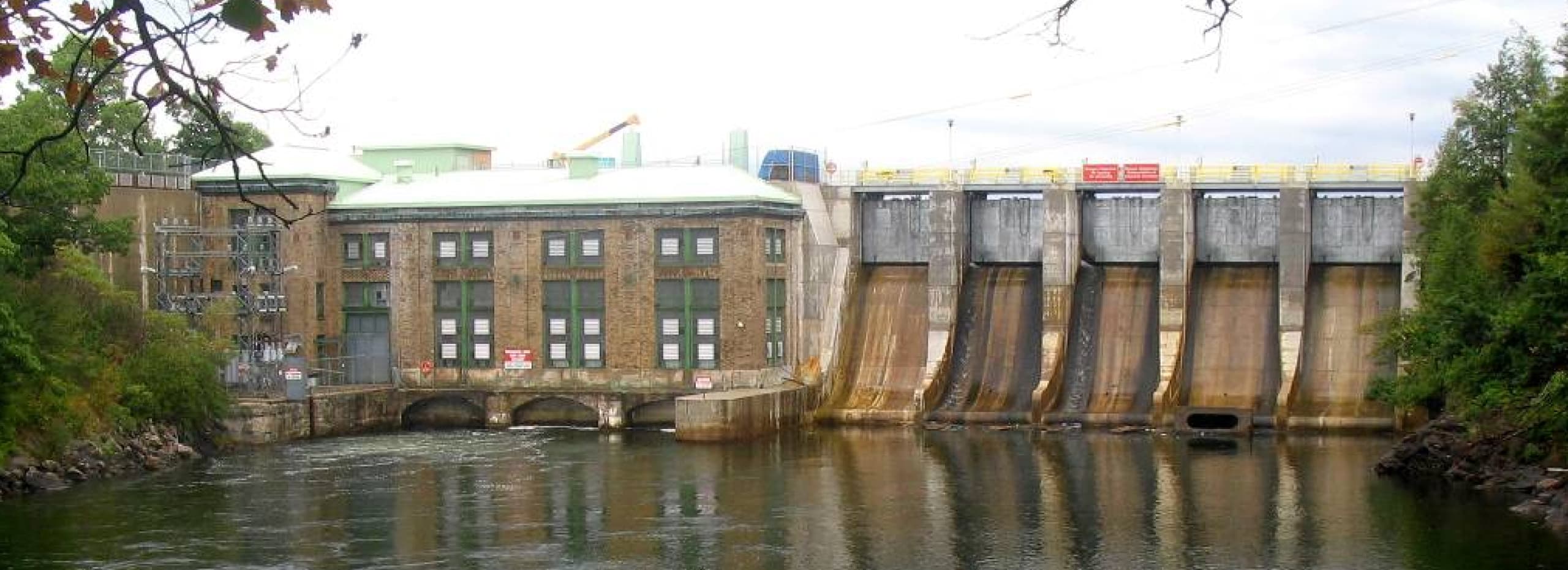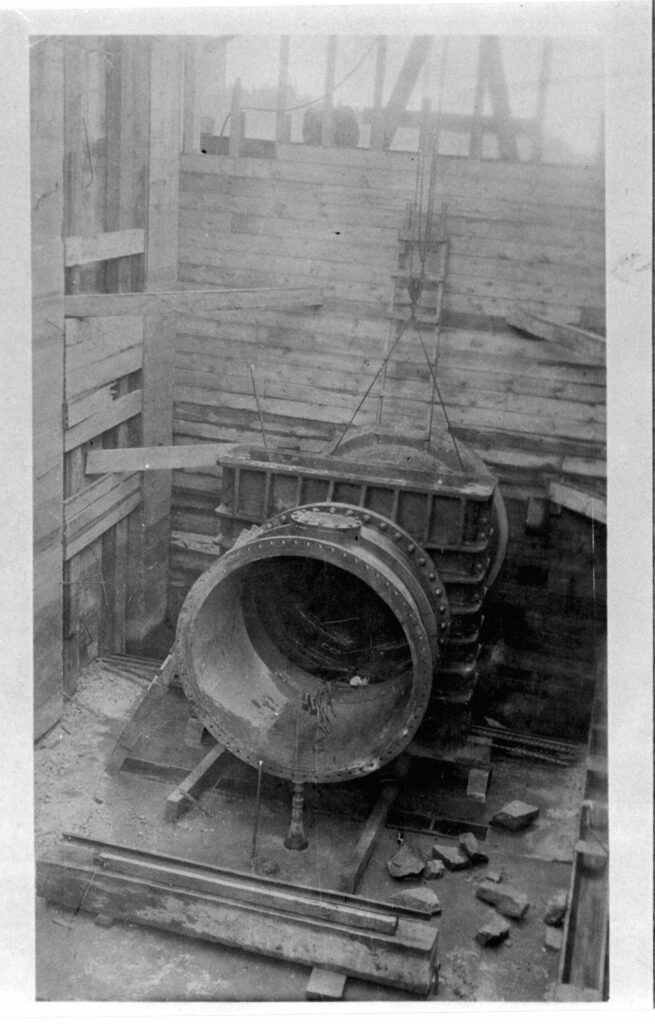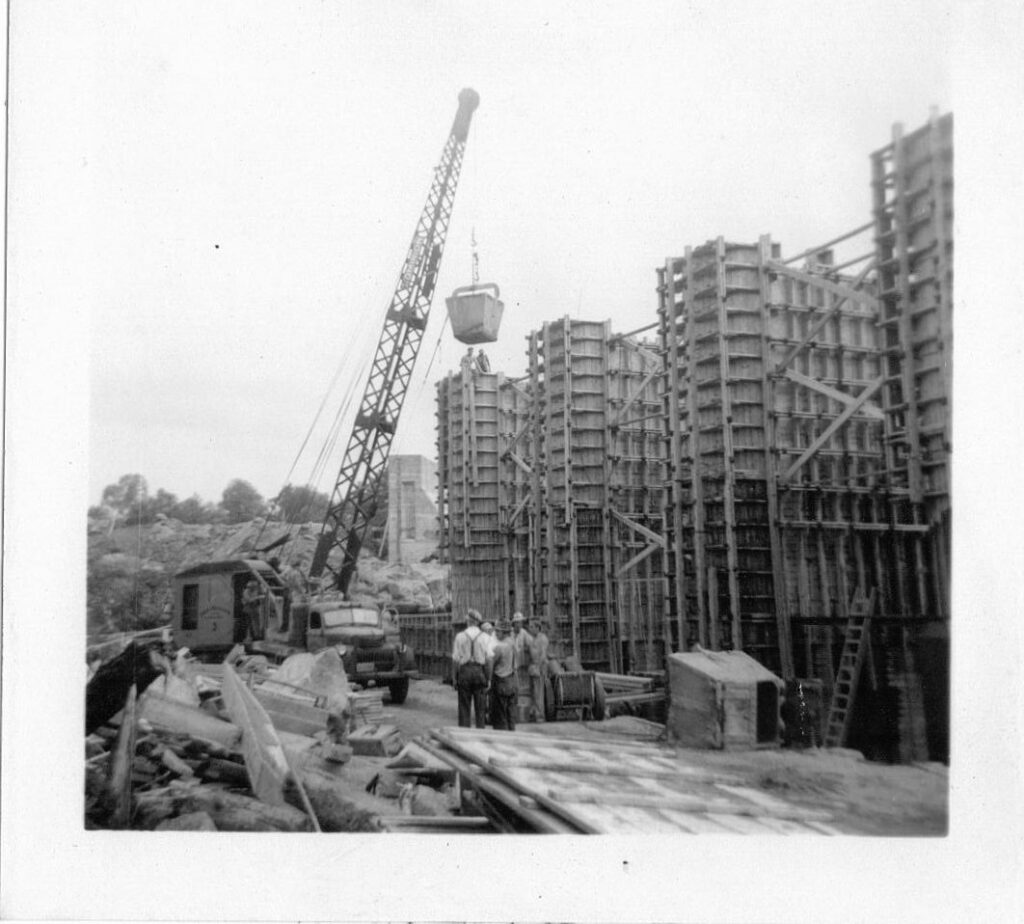
Our History
The generation of electricity from waterpower extends over more than 100 years at Orillia Power. In 1902 electric power from the first plant on the Severn River reached Orillia from Ragged Rapids, making this the first municipally owned hydraulic station for the long distance (19 miles) transmission of electricity in North America. Before building the station, the whole town council and Mayor snowshoed from the nearest road to Ragged Rapids to inspect the proposed site. The station was built to replace two steam powered generators that provided electricity for lighting and to power pumps for the town’s municipal water supply.
In 1913, the Dominion Department of Railways and Canals, in conjunction with its plan to improve the Trent Waterways system, suggested that Orillia’s power station (so newly completed at Ragged Rapids) be transferred 1-1/2 miles downstream to the Swift Rapids, also on the Severn River. The purpose of the suggestion was to avoid the long and costly rock cutting that would be necessary to by-pass the Ragged Rapids. The former Orillia Water Light and Power (OWLP) Commission agreed to the move in view of the offer of Dominion Government financing and the provision for future increased supplies of electricity. As a result of this agreement, the construction of the new dam, and powerhouse was begun in 1913.
The work at the Swift Rapids was interrupted with the outbreak of the war in 1914, but shortly resumed. Meanwhile, Orillia’s power needs were supplied by the Ontario Hydro Commission with whom the OWLP Commission had cooperated in the erection of a high tension line between Eugenia Falls and Collingwood.
In 1917, the Ragged Rapids station was decommissioned and the new Swift Rapids station was completed at Lock 43 on the Trent Severn Waterway. The new larger station supplied the ever increasing industrial and domestic demand for electricity. The Swift station has a net head of 14.3 metres and an output capacity of 8.0 megawatts (MW).

The continuing increase in demand for electricity to power industry and residential consumers prompted the construction of Orillia Power’s second generating station, Minden G.S. in 1935. It is located on the Gull River in the town of Minden. The station was built during the depths of the great depression. Construction was performed by employing men who qualified under the Unemployment Relief Work Act. The Minden station has a net head of 21.3 metres and an output capacity of 4.4 MW.

In the early days of electricity production, when demand was easily matched by supply from the generating stations, it was possible to continue producing power when the rest of the province was experiencing a blackout. In 1948, after a blackout, Orillia was an “oasis of light in semi blackout” according to the September 15,1948 edition of The Evening Telegram after a power failure in the Ontario Hydro system. Orillia and the surrounding hamlets of Longford, Uhthoff and Atherley were able to carry on in full capacity thanks to Orillia’s independent system.
In 1950, construction of the Matthias generating station was completed on the south branch of the Muskoka River in Matthiasville. It was needed to supply power to growing industrial and residential demand in Orillia. The Matthias station has a net head of 13.1 metres and an output capacity of 3.0 MW.

It was obvious that the demand for power would increase as Orillia grew, so a decision had to be made whether to build another hydraulic generating station or affiliate with Ontario Hydro. On June 15, 1954, Orillia joined the Hydro family as a participating municipality. Ontario Hydro paid $231,000 to Orillia for equipment that had been serving some of the latter’s rural customers who would henceforth be serviced by Ontario Hydro.
In 1965, work began at Swift Rapids to upgrade the equipment at this, the oldest of Orillia’s generating stations. This machinery had served the system for over fifty years and the Commission was faced with the choice of abandoning the station or replacing the equipment. The Commission replaced two of the three old turbines with two new tube type turbines that increased the capacity of the station from 6,000 H.P. to 10,000 H.P. The tube type turbine was recognized as being the most efficient and economical installation for the Swift Rapids G.S. redevelopment.
Throughout the decades, Orillia Power has maintained, operated and continued to invest in critical upgrades to keep its generating stations operating safely and efficiently.
More recently, Orillia Power has made investments in solar power generation and currently has 2.5 MW of solar capacity at seven rooftop installations.
In 2020, Orillia Power acquired Shaman Power Corporation, which has been in the waterpower business for over 25 years. Through this acquisition, Orillia Power added three additional generating stations to its fleet, located in Fenelon Falls, Elora and Marmora, Ontario. The Shaman stations have a combined output capacity of 4.6 MW. The addition of these new waterpower facilities to Orillia Power’s portfolio of renewable generation assets, supports the growth of the organization in its area of core competency.
At part of Orillia Power’s centennial celebrations in 2013 a collection of historical photos was compiled. Take a walk down memory lane to see some of Orillia Power’s history…